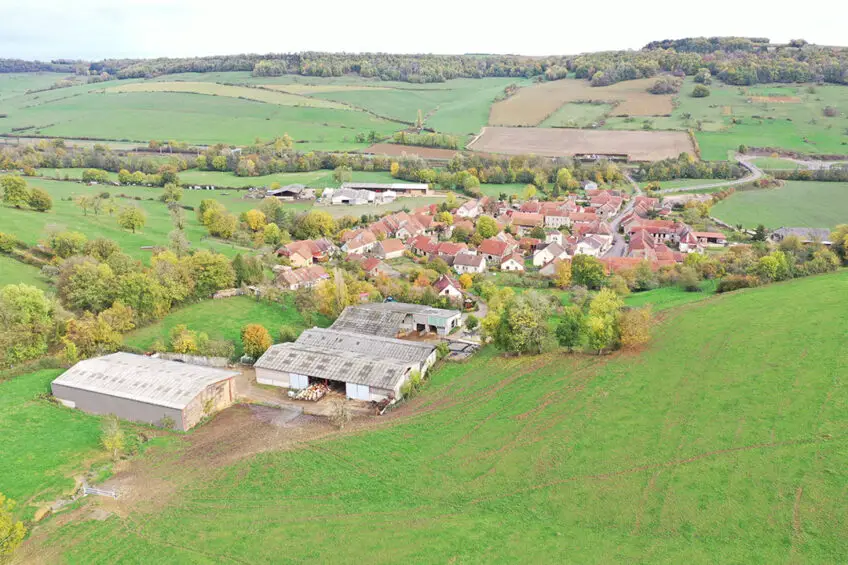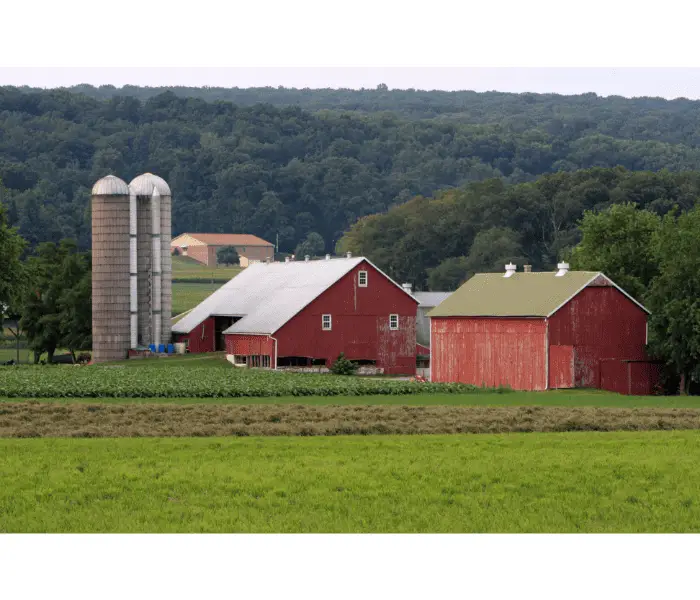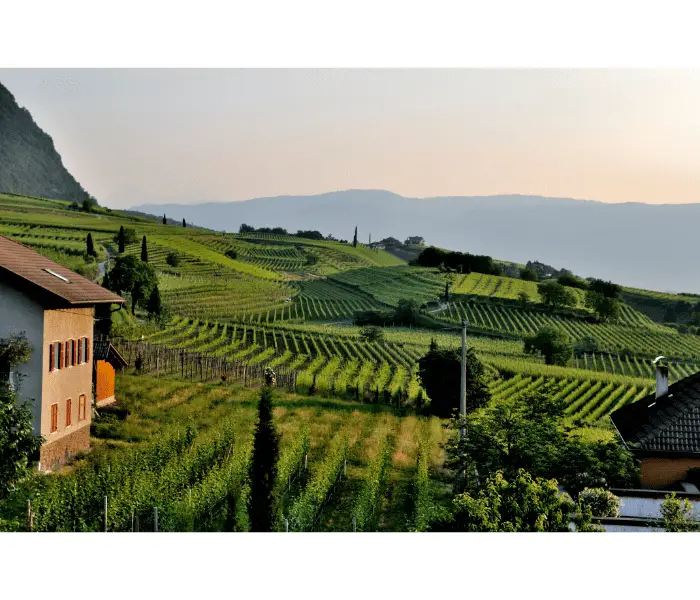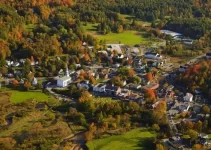There are some comparisons where the differences are very subtle. This isn’t one of those. So if you were wondering what the difference between a village and a farm was, it’s pretty straightforward.
Villages are distinct from farms in their purpose. They share some characteristics but not enough for there to be much confusion about which is which.
So let’s start by looking closely at the similarities and differences between villages vs farms.
What are the Main Differences between a Farm and a Village?
A farm consists of agricultural land which is used for growing crops or keeping animals and any buildings that are needed for storage or shelter. Very often the buildings of the farm will be laid out in a group centred around a yard.
There may also be a farmhouse for the farmer and his family to live in.
Older or less commercial farms tend to be relatively small with one or two barns for storage and a farmhouse. However, modern farming methods mean that the acreage of farmland is increased and there is no necessity for the landowner to live on site.
This might mean that some farms have several large buildings none of which offer habitation except for livestock or for the storage of machinery or harvested crops.
The definition of what actually makes a collection of houses a village turns out to be rather controversial.
But for now, let’s stick to the traditional definition that a village is a small rural community built around one parish church and which may have few local amenities such as a pub, village hall, a green or common, and a shop or school.

Difference Between Village and Farm
A village functions primarily as a residential area – a place for rural people and their families to live. The way of life of the village community was often traditionally linked to the location.
So for coastal villages, this may be linked to maritime industries such as fishing and for forested areas, this would have meant timber-related roles.
But for land-based villages, the reason for their development would very regularly be linked to agriculture. And this is where we see some clear links between farms and villages.
What is a Farming Village?
A farming village is a rarity now. In the past, a farming village would have evolved from the agricultural work that would have happened on a farm.
Now, of course, most people who live in villages travel elsewhere to work. Farming villages still exist, but modern industrial farming methods have meant that agricultural workers no longer have to live close to the farm they work at.

What Type of Farming is Used in Villages?
Farms require workers and historically these workers would need a conveniently close place to live. A farmer may have built cottages for his workers (tied cottages) or the workers may have built their own properties for a more comfortable and stable existence.
Either way, farming villages grew around the work on a nearby farm.
For arable farms, this work would focus on the tillage of fields and the sowing and harvesting of crops. And for pastoral farms that may have centred around the rearing and slaughtering of livestock for food and other animal-based products, such as wool.
In places like India, some farms would have done both. And successful farms would require larger numbers of workers and so many villages would have seen a growth in population over time.
If several farms in the area were successful, this may have attracted a more permanent desire for workers to stay for longer than a harvest or lambing and a village would grow.
Farming in Village
And because of this success farming villages would also have attracted skilled and semi-skilled workers such as blacksmiths, coppers and, in more modern times, mechanics.

You may also have a diary for making cheese, and for sheep farms, there may have been several cottage industries based around the spinning and weaving of wool.
So although there are clear distinctions between farms and villages, it’s clear that people living in villages may have been historically dependent on a nearby farm for work.
And one thing is for sure, it was often a farmstead that was the reason for the growth of many villages today. And from those villages grew towns, and from those towns, cities grew. Even London was a village once. Would it surprise you to find out that London still retains a few farms to this day?



